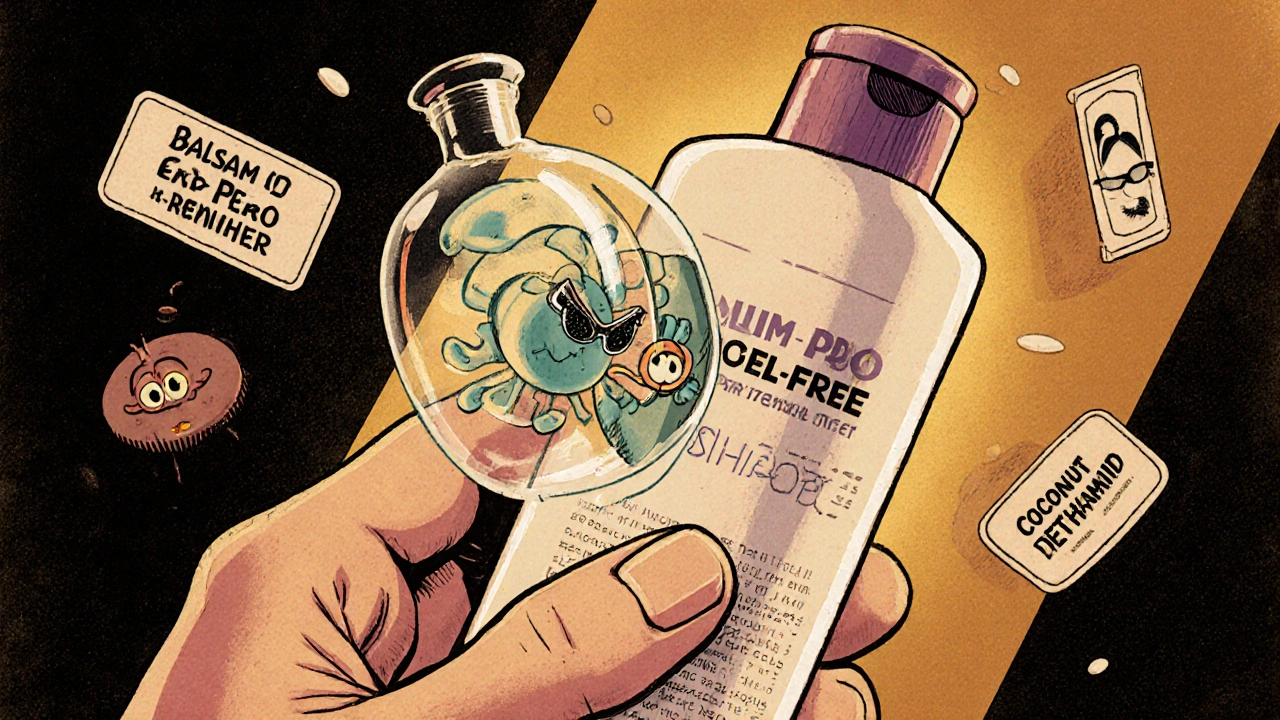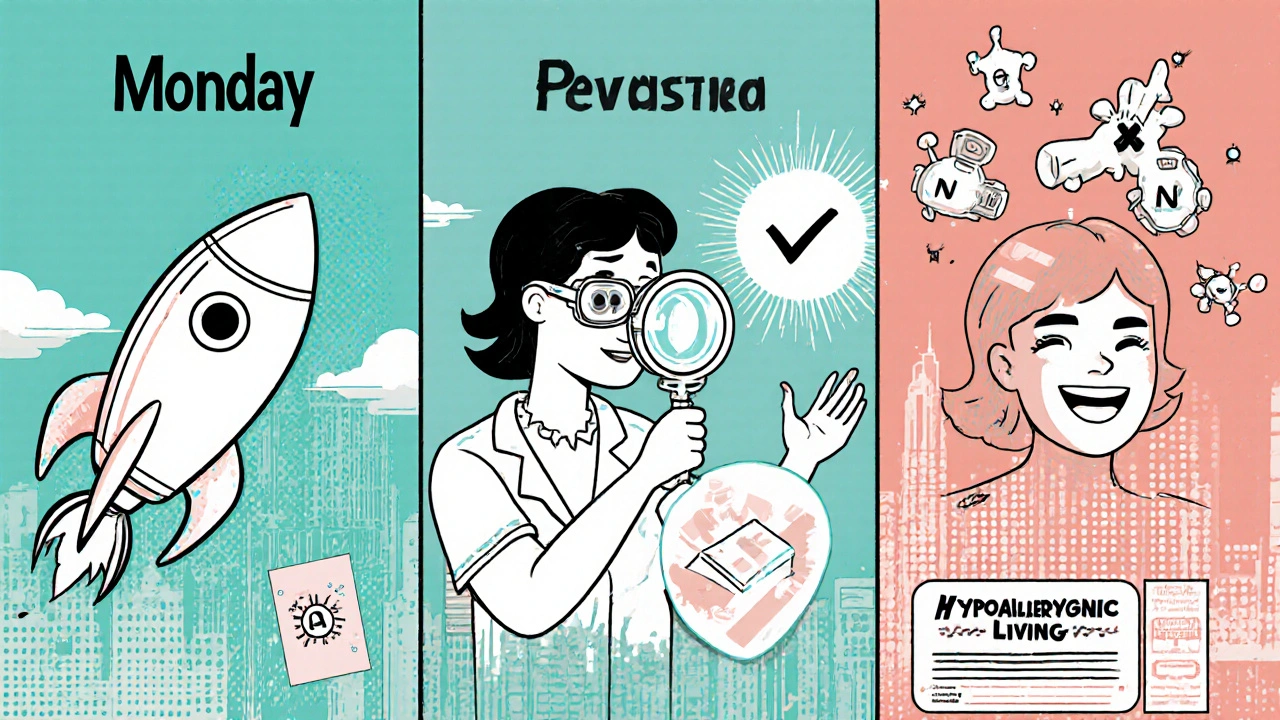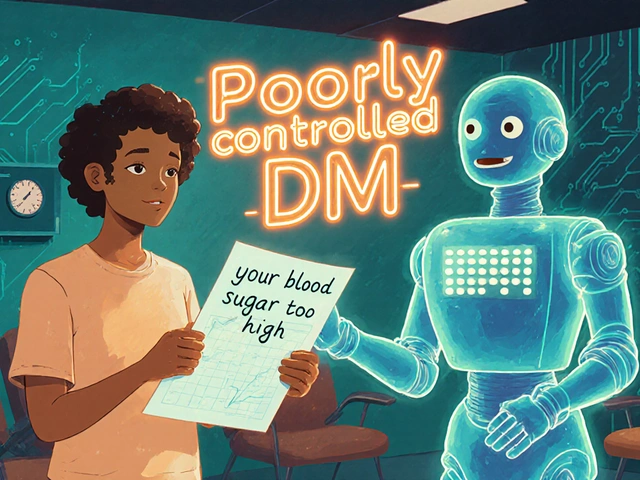
What Is Contact Allergens and Why Does It Matter?
If your skin keeps breaking out in red, itchy rashes - especially after using lotion, wearing jewelry, or handling cleaning products - you’re not just unlucky. You might be reacting to something in your everyday environment. These are called contact allergens: substances that trigger an immune response in your skin, leading to allergic contact dermatitis. Unlike irritants that burn or scratch your skin right away, allergens sneak in. They don’t cause a reaction the first time you touch them. But after repeated exposure, your body learns to see them as invaders. Then, boom - rash.
This isn’t just a minor annoyance. For some people, it’s a daily battle. A rash on the hands from shampoo. A line of red bumps from a watch strap. A flare-up after gardening, even if you’ve done it for years. The key is figuring out exactly what’s causing it. That’s where patch testing comes in.
How Patch Testing Works - Step by Step
Patch testing is the gold standard for diagnosing allergic contact dermatitis. It’s not like a skin prick test for pollen or peanuts. Those look for immediate reactions. Patch testing finds the slow-burning ones - the kind that show up two or three days later. That’s because it’s measuring a type IV hypersensitivity reaction, a delayed immune response driven by T-cells, not antibodies.
Here’s how it actually happens:
- You visit a dermatologist, usually on a Monday. They apply small amounts of common allergens - diluted and mixed into petrolatum - into tiny chambers on adhesive patches.
- These patches are stuck to your back. Between 30 and 100 different substances can be tested at once. Some are standard across the world; others are added based on your job, hobbies, or products you use daily.
- You wear the patches for exactly 48 hours. No showering. No sweating. No swimming. Even a little moisture can wash away the allergens or blur the results.
- On Wednesday, you return. The patches are removed. The skin is checked for early reactions.
- You come back again on Friday - 96 hours after application - for the final reading. That’s when most reactions become clear.
That’s three visits. One week. And it can change everything.
What’s in the Patches? Common Allergens Everyone Should Know
Not every allergen is tested in every clinic. But there’s a baseline panel that covers about 70% of cases worldwide. Here are the usual suspects:
- Nickel - found in jewelry, belt buckles, zippers, and even some cell phones. It’s the #1 cause of allergic contact dermatitis globally.
- Chromium - in cement, leather, and some paints. Construction workers and tanners are at high risk.
- Formaldehyde - used as a preservative in cosmetics, shampoos, and even some medicines. It’s sneaky because it’s in so many products.
- Paraphenylenediamine (PPD) - the main ingredient in black hair dye. Reactions here can be severe and long-lasting.
- Neomycin - an antibiotic in topical creams. People often apply it to rashes, not realizing it’s making them worse.
- Coconut diethanolamide - a foaming agent in soaps and shampoos. Often hidden under ‘natural’ labels.
- Myroxylon pereirae (balsam of Peru) - found in perfumes, flavored foods, and some sunscreens. It’s a cross-reactor, meaning if you’re allergic to this, you might react to cinnamon, vanilla, or citrus.
And that’s just the baseline. If you’re a florist, you might get tested for fragrances or plant resins. If you’re a dental technician, you’ll be checked for metals like palladium or mercury. A 2023 study by the American Academy of Dermatology showed expanded panels catch about 80% of cases - far more than the standard set alone.

Patch Testing vs. Irritant Contact Dermatitis - What’s the Difference?
Not every rash is an allergy. In fact, most are not. Irritant contact dermatitis is far more common. It happens when something physically damages your skin barrier - like bleach, detergent, or even too much handwashing. There’s no immune system involvement. It’s pure chemical burn.
So how do you tell them apart?
- Allergic contact dermatitis usually appears 24-72 hours after contact. It’s often itchy, red, and may blister. It can spread beyond where the allergen touched - because your immune system is involved.
- Irritant contact dermatitis shows up fast, often within minutes or hours. It stings more than it itches. The rash stays where the substance touched. No spreading.
Patch testing only detects the allergic kind. If your test comes back negative, it doesn’t mean you’re in the clear. It might mean you’re dealing with an irritant - and you’ll need a different strategy to manage it.
What to Do Before and After the Test
Getting accurate results isn’t just about the test itself. Your behavior matters.
Before: Don’t use steroid creams on your back for at least two weeks before the test. They can suppress reactions and give you a false negative. Avoid sun exposure on your back - tanned skin can mask reactions. And yes, you can keep taking antihistamines. They don’t interfere with type IV reactions.
During: Keep the patches dry. No showers. No sweating. If you work out, skip it. If you live in a hot climate like Perth, keep the air conditioning on. If a patch starts to peel, don’t re-stick it. Call your clinic.
After: If something comes back positive, you’ll get a list of what to avoid. That’s the start of your recovery. You’ll also get a list of safe alternatives - products without nickel, formaldehyde, or fragrance. Your dermatologist might recommend a “repeat open application test” for things like your favorite moisturizer. Apply it twice a day to your inner forearm for a week. If no rash appears, it’s probably safe.

What If the Test Is Negative?
It happens. About 20% of people with chronic rashes get negative patch tests. That doesn’t mean nothing’s wrong. It could mean:
- The allergen isn’t in the standard panel - maybe it’s a new chemical in your skincare product.
- You’re reacting to something only when exposed to sunlight - photocontact dermatitis.
- Your rash is from an irritant, not an allergen.
- You tested during a flare-up, and your skin was too inflamed to react properly.
In those cases, your dermatologist might suggest testing more substances, using your own products in a repeat open test, or checking for other skin conditions like eczema or psoriasis.
Long-Term Management - Avoidance Is the Cure
Patch testing doesn’t cure allergies. It gives you power. Once you know what’s triggering your skin, you can avoid it. That’s the real win.
Read labels. Use apps like Think Dirty or SkinSAFE to scan products for allergens. Ask your pharmacist for fragrance-free, nickel-tested options. Switch to stainless steel or titanium jewelry. Wear gloves when cleaning. Wash new clothes before wearing them - dyes and finishes can be hidden irritants.
And remember: healing takes time. Even after avoiding the allergen, your skin may take weeks to calm down. Topical corticosteroids help with inflammation. Antihistamines ease itching. But the real solution? Knowledge. And avoidance.
Future of Patch Testing - What’s Coming Next?
As products change, so do allergens. New chemicals appear in cosmetics, electronics, and even food packaging. Researchers are constantly updating patch test panels to include emerging triggers - like dimethyl fumarate in furniture or certain UV filters in sunscreens.
There’s also talk of personalized panels based on your lifestyle, geography, and occupation. In Australia, for example, exposure to eucalyptus oils or native plant resins might be added to regional panels. The T.R.U.E. Test - a pre-loaded system with 35 allergens - is already making testing faster and more consistent.
But nothing beats the classic patch test. It’s cheap, reliable, and doesn’t require fancy machines. For now, and likely for decades to come, it remains the only way to definitively identify what’s making your skin react.
Can I do patch testing at home?
No. Patch testing requires medical-grade allergens, sterile application, and trained interpretation. Home kits or DIY methods using your own products are unreliable and can cause severe reactions. Always see a dermatologist.
Does patch testing hurt?
No, it’s not painful. You might feel slight pressure or mild itching where the patches are, especially if you’re reacting. But no needles, no blood, no burning. The discomfort is minimal compared to the relief you get from knowing what’s causing your rash.
How long until I see improvement after avoiding an allergen?
It varies. Some people notice less redness in 1-2 weeks. Others take 4-6 weeks for the skin to fully heal, especially if the rash was chronic. Consistency is key. Even one accidental exposure can set you back.
Can children get patch tested?
Yes, but it’s less common. Children under 12 usually only get tested if they have persistent, unexplained rashes that don’t respond to standard eczema treatments. The procedure is the same, but fewer allergens are used, and the skin is monitored more closely.
Is patch testing covered by insurance?
In Australia, patch testing is often covered under Medicare if referred by a GP or dermatologist. Private health insurance may also contribute. Always check with your provider - the cost can range from $200 to $500 depending on the number of allergens tested.
Alex Ramos
I got patch tested last year after my hands turned into a lobster. Nickel was the culprit. Switched to titanium rings and now I can touch my phone without crying. Life changed. 😌
Arpita Shukla
You missed formaldehyde-releasing preservatives like DMDM hydantoin and quaternium-15. Those are everywhere in 'natural' brands. I had a 3-year rash until I started reading the INCI list. Your post is good but incomplete.
Benjamin Stöffler
Ah, the silent war between the epidermis and the chemical industrial complex... We are not merely skin, we are sensors. Each patch is a manifesto of molecular betrayal. The body remembers. The body judges. And the dermatologist? Merely the scribe of our immune rebellion.
Mark Rutkowski
This is one of those rare moments where medicine actually gives you back your life. Not a pill. Not a surgery. Just a little patch on your back, and suddenly you understand why your skin has been screaming for years. It’s not weakness. It’s your body trying to tell you the truth. Thank you for writing this.
Ryan Everhart
So you’re telling me my ‘natural’ shampoo has coconut diethanolamide and I didn’t know? Cool. So my 6-month rash was basically a chemistry experiment I volunteered for. Thanks for the clarity. Now I’ll just go cry in the shower. 🤷♂️
David Barry
Patch testing is overrated. Most people just need to stop being lazy. If your skin breaks out, don’t blame nickel-blame your diet, your stress, your sleep, your phone, your water, your aura. The real allergen is modern life. Also, your dermatologist is probably just trying to upsell you.
Alyssa Lopez
I did the test in 2021 and got 12 positives. Nickel, PPD, and balsam of Peru. I now only use CeraVe and wear cotton gloves to wipe my ass. America needs to ban these chemicals. We’re not lab rats!
edgar popa
I thought my eczema was stress-related until I found out I was allergic to my own laundry detergent. Now I wash everything twice. No more rashes. Just pure peace. 🙏
Eve Miller
It is deeply irresponsible to suggest that 'natural' products are safe. The term is unregulated and often a marketing ploy. Balsam of Peru, for instance, is derived from tree resin and is a known allergen. Consumers must be educated, not misled.
Chrisna Bronkhorst
Patch testing is a scam. I’ve had the same rash for 10 years. I tried everything. Then I just stopped caring. Now I rub Vaseline on it and call it a day. The world is toxic. Accept it.
Amie Wilde
I did the test and it was negative. So I started using my old lotion again. Rash came back in 2 days. So I guess the test was right after all. Who knew?
Gary Hattis
In South Africa, we have a lot of reactions to indigenous plants like Rooibos and Buchu. Most patch panels don’t include them. If you’re from the Global South, your allergens are being ignored. This isn’t just medical-it’s colonial.
Renee Ruth
I got a positive for neomycin and now I’m terrified of every cream I’ve ever used. My skin is ruined. My therapist says I have dermatitis anxiety. I think she’s right. I just want to touch my own face again.
Samantha Wade
This is an excellent, meticulously researched overview. I especially appreciate the distinction between allergic and irritant contact dermatitis. Many clinicians fail to make this critical differentiation, leading to inappropriate treatment protocols. Well done.
Elizabeth Buján
I’m 68 and just got diagnosed with nickel allergy after 50 years of wearing cheap earrings. I cried. Then I bought a titanium necklace. It’s the first thing I’ve ever worn that doesn’t itch. I feel like a new person. You’re not too old to learn your skin’s secrets.





Write a comment